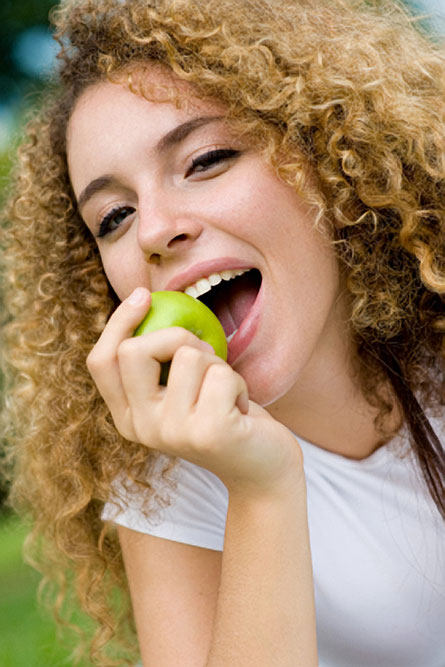Counterintuitive nutrition findings
Sometimes data don't confirm what we expected.
Results from several new studies or data analyses presented today at the Experimental Biology meeting here in New Orleans caught my eye — precisely because they didn’t conclude what I would have expected. Here are two. Their authors aren’t exactly sure what to make of their data. Maybe they’ll make sense to you.

1) Teens keep trim with snacks — at least the girls do.
The federal government performs periodic National Health and Nutrition Examination Surveys to keep tabs on the wellbeing and eating habits of a representative cross section of the U.S. population. Debra R. Keast of Food & Nutrition Database Research Consulting in Okemos, Mich., and her colleagues tapped NHANES data collected between 1999 and 2004 on eating habits of 5,811 girls who were 12 to 18 years old.
At last year’s EB meeting, these researchers reported that 90 percent of these girls consumed snacks. On average, these drinks and nibbles amounted to 650 calories a day — or 28 percent of a young woman’s total dietary intake.
Today, Keast’s team correlated the girls’ snacking behaviors with their waistlines and weights. And the surprise: Overall, the more girls snacked, the less likely they were to be overweight.
For example, 32 percent of the girls were overweight or obese. But among those who didn’t snack, 37.5 were pudgy or worse. For those snacking twice a day, the rate was just 30 percent — and less still, under 25 percent, if girls snacked at least four times a day.
The average waist circumference for the girls was 80 centimeters (or 31.5 inches). But the average for girls who didn’t snack was 3.6 cm bigger while those who snacked at least twice a day could cinch their belts some five centimeters tighter than the nonsnackers.
Accumulating fat around the waistline — the so-called apple physique — is the unhealthiest. Overall, 18 percent of the girls had such abdominal obesity. But the proportion of apples was 23.4 percent among nonsnackers — and dwindled to under 12 percent among girls who ate at least four between-meal snacks. Go figure.
2) Protein won’t shield seniors from age-related muscle wasting.
Some studies have suggested that diets rich in protein might help preserve skeletal muscle, the sinewy protein-based fibers that move our body’s frame. A new study suggests that a better recipe might include fat — and maybe cholesterol. Huh?
As people age, their bodies inevitably — and inexorably — begin trading muscle for fat. After the age of 40 or so, even people whose weights and clothing sizes remain constant will have begun losing muscle for fat. And as muscle protein is lost, so eventually will go the strength that helps maintain balance, provide endurance and limit the likelihood of falls. Muscle strength also helps maintain bone density.
Bottom line: People should do whatever they can to limit this age-related muscle loss, known as sarcopenia.
Exercise is important. But for seniors who are fairly sedentary, there has been hope that certain dietary prescriptions might slow sarcopenia’s advance.
Toward that end, Megan E. Sheehy and her colleagues at the the University of Rhode Island decided to probe for cues by looking at men and women over 60 and comparing the diets of those who seemed to have sound muscles versus those who were in the throes of sarcopenia. They recruited 30 volunteers to have their thigh muscles analyzed for evidence of sarcopenia. Those whose percent muscle area had fallen below 50 percent were considered sarcopenic.
To the researchers’ surprise, there was no difference in dietary-protein intake between those with apparent sarcopenia and those with sounder muscles. What did distinguish the better-muscled group was significantly more consumption of fats, especially saturated fats, and cholesterol. Oops. That’s not what dieticians would like to recommend.
Concludes Sheehy’s group: More research is needed. Uh, yeah.







